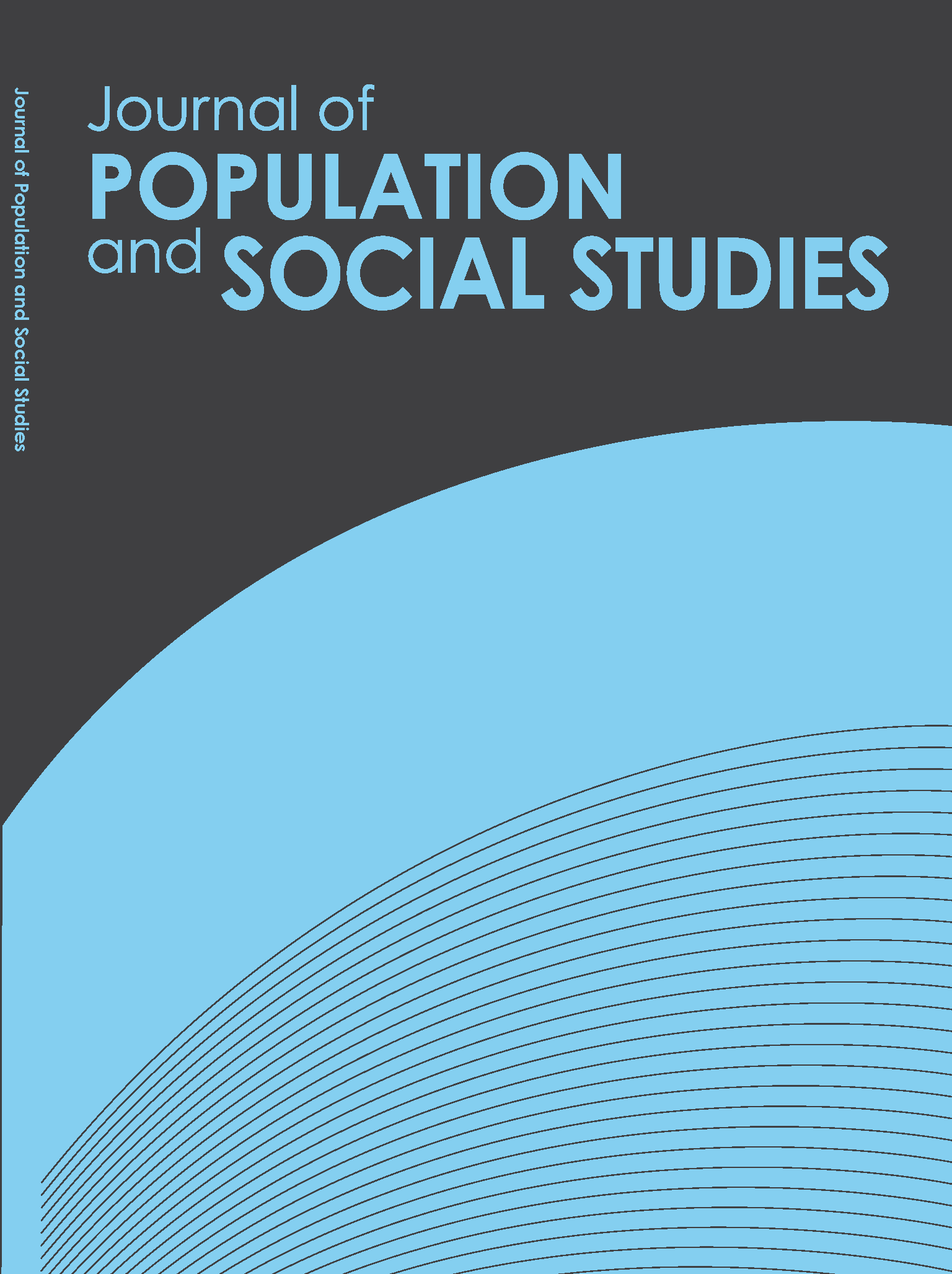The Effect of Remittance on Economic Growth in Cambodia
Main Article Content
Abstract
It is estimated that 1.7 million Cambodian migrant workers, accounting for 11% of its population, have sent remittances worth hundreds of millions of USD to their family members in the kingdom in 2018. This great outflow of workers and inflow of remittances has raised the government’s concern about a proper migration policy for harnessing labor migration and remittances to enhance economic development. Therefore, the main objectives of this study are to provide a brief overview of migration policy in Cambodia and to investigate the effect of remittances on economic growth in Cambodia. We estimated multiple regression models, using Ordinary Least Square (OLS) method based on data from the World Development Indicators (WDI) covering the time period from 1993 to 2016. The results of our multiple regression analysis indicate that remittances have had a significant positive impact on the country’s economy, having contributed 0.1180% to its economic growth, thanks to the increased use of remittances in enterprises, agriculture and healthcare in recent years, and financial institutions which have used remittances productively. Based on our findings, we suggest that the government should provide more financial literacy programs to migrant workers and their family members, so that the productive use of remittances in enterprises can be further strengthened.
Article Details
References
• Association of Southeast Asian Nations (ASEAN). (2018). ASEAN consensus on the protection and promotion of the rights of migrant workers. Jakarta, ASEAN Secretariat.
• Barajas, A., Chami, R., Fullenkamp, C., Gapen, M., & Montiel, P. (2009). Do workers’ remittances promote economic growth? IMF Working Paper. WP/09/153.
• Deelen, L., & Vasuprasat, P. (2010). Migrant workers’ remittances from Thailand to Cambodia, Lao PDR and Myanmar: Synthesis report on survey findings in three countries and good practices. ILO Regional Office for Asia and the Pacific, Bangkok.
• Department of State Publication, United States of America (2017). Trafficking in persons report. 2017. Retrieved February 11, 2019, from https://www.state.gov/j/tip/rls/tiprpt/2017/
• Dietmar, M., & Adela, S. (2017). The impact of remittances on economic growth: An econometric model. EconomiA, 18, 147-155.
• Dilshad, W.B. (2013). The impact of workers’ remittances on economic growth: An empirical study of Pakistan’s economy. International Journal of Business and Management, 8, 126-131.
• Fagerheim, M.G. (2015). Impact of remittances on economic growth in ASEAN, an empirical analysis, 1980-2012. Department of Economics, University of Oslo.
• Harkins, B., & Ahlberg, M. (2017). Access to justice for migrant workers in South-East Asia. International Labour Organization. Bangkok: ILO.
• Human Rights Watch. (2011). “They deceived us at every step” Abuse of Cambodian domestic workers migrating to Malaysia. Retrieved from https://www.hrw.org/sites/default/files/reports/cambodia1111webwcover.pdf
• Human Rights Watch World Report. (2011). Seven stories press. Retrieved February 11, 2019, from https://www.hrw.org/world-report/2011
• International Labour Organization (ILO). (2016). Assessment of the complaints mechanism for Cambodian migrant workers. International Labour Organization. Phnom Penh: ILO.
• Jawaid, S.T., & Raza, S.A. (2016). Effects of worker’s remittances and its volatility on economic growth in South Asia. International Migration, 54, 1-19.
• Jongwanich, J. (2007). Worker’s remittances, economic growth and poverty in developing Asia and the Pacific countries. UNESCAP Working Paper. WP/07/01.
• Jouini, J. (2015). Economic growth and remittances in Tunisia: Bidirectional causal links. Journal of Policy Modeling, 37, 355-373.
• Koay, Y.Y., & Choong, C.K. (2013). The nexus between worker remittances and economic growth in Malaysia. Prosiding Perkem VIII, 1, 507-515.
• Lim, S., & Simmons, W.O. (2015). Do remittances promote economic growth in the Caribbean community and common market? Journal of Economics and Business, 77, 42-59.
• Makun, K.K. (2017). Imports, remittances, direct foreign investment and economic growth in republic of the Fiji Islands: An empirical analysis using ARDL approach. Kasetsart Journal of Social Sciences, 39, 439-447.
• Mohamed, K. (2016). Remittances and growth in Tunisia: A dynamic panel analysis from a sectoral database. Journal of Emerging Trends in Economics and Management Science, 7, 342-351.
• Nwaogu, U.G., & Ryan, M.J. (2015). FDI, foreign aid, remittance and economic growth in developing countries. Review of Development Economics, 19, 100-115.
• Puja, G. (2013). Macroeconomic effects of international remittances: The case of developing economies. Economic Modelling, 33, 292–305.
• Rao, B.B., & Hassan, G.M. (2011). A panel data an analysis of the growth effects of remittances. Economic Modelling, 28, 701–709.
• Ronald, R.K. (2013). Remittances and economic growth: A Study of Guyana. Economic Systems, 37, 462-472.
• Salahuddin, M., & Gow, J. (2015). The relationship between economic growth and remittances in the presence of cross-sectional dependence. Journal of Developing Areas, 49, 207-221.
• Sayantan, G.D. (2017). Impact of remittances on economic growth in developing countries: The role of openness. Global Economy Journal, 17, 1-12.
• Siddique, A., Selvanathan E.A., & Selvanathan, S. (2012). Remittances and economic growth: Empirical evidence from Bangladesh, India and Sri Lanka. Journal of Development Studies, 48, 1045-1062.
• Sophal, C. (2009). Review of labour migration management, policies and legal framework in Cambodia. ILO Regional Office for Asia and the Pacific. Bangkok: ILO. Sophal, C. (2012). Economic costs and benefits of labour migration: Case of Cambodia. In H. Jalilian (Ed.), Costs and benefits of cross-country labour migration in the GMS (pp. 118-189). ISEAS–Yusof Ishak Institute.
• Testaverde, M., Harry M., Claire H.H., & Achim S. (2017). Migrating to opportunity: Overcoming barriers to labor mobility in Southeast Asia. Washington, DC: World Bank. doi:10.1596/978-1-4648-1106-7.
• The World Bank. (2018). Record high remittances to low- and middle-income countries in 2017. Retrieved February 11, 2019, from https://www.worldbank.org/en/news/press-release/2018/04/23/record-high-remittances-to-low-and-middle-income-countries-in-2017
• Tunon, M., & Rim, K. (2013). Cross-border labour migration in Cambodia: Considerations for the national employment policy. ILO Asia-Pacific working paper series, 2227-4405.
• Williams, R. (2015). Multicollinearity. University of Notre Dame. Retrieved from: https://www3.nd.edu/~rwilliam/stats2/l11.pdf


